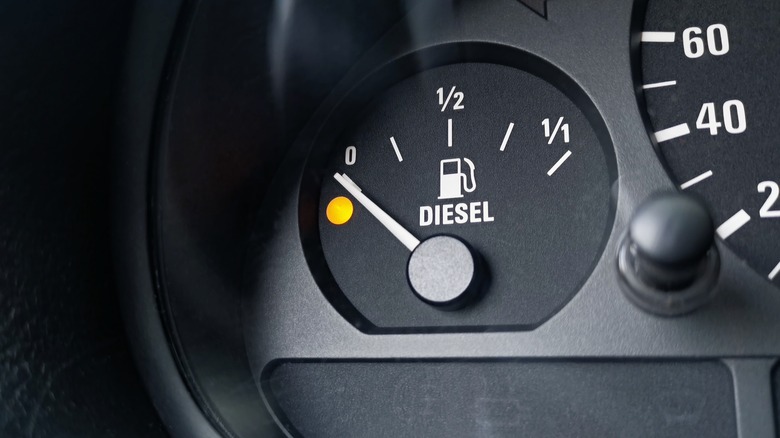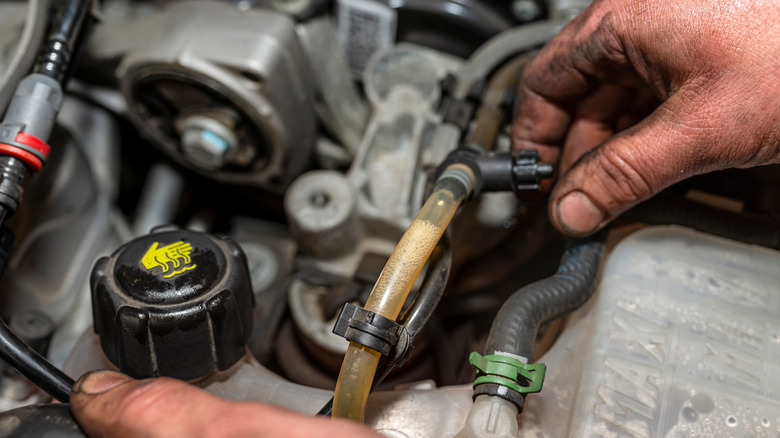How To Start A Diesel Engine After It Runs Out Of Fuel
Diesel engines are torquey and efficient powerhouses capable of outlasting a comparable gas engine. But despite their robust build quality and beefier internals, there are things to avoid if you have a diesel truck, mower, or tractor. Not keeping up with regular oil changes is one of them, and it's good practice to warm up your diesel after cold starts before setting off.
However, running out of fuel is the biggest no-no if you drive a diesel. Unlike in a gasoline car, restarting a diesel engine after it runs out of fuel requires bleeding the system of air to get the motor up and running.
In most modern diesel engines built from the early 2000s to the present, there's a self-bleeding function that rids the fuel system of air without tinkering under the hood, enabling you to start the diesel in just a few minutes. When your diesel runs dry and the motor dies, avoid cranking and re-cranking the motor and refer to the steps below:
- Refill the tank with a gallon or two of fresh diesel fuel.
- Turn the ignition on without starting the engine and leave it in the "ON" position for 30 seconds.
- Turn the ignition off, wait a few seconds, then crank the motor until it starts.
- If it does not start, repeat steps 2 and 3.
- If the motor stalls after starting, turn the ignition off and wait a minute before cranking. Avoid cranking for more than 10 to 12 seconds each time to prevent burning or damaging the starter motor.
- If the motor starts, let it warm up for a few minutes before driving. It's not unusual for the engine to idle roughly or emit plumes of white smoke as it rids the fuel system of air.
- Drive to the nearest refilling station and fill the tank with more diesel.
Older diesels need manual bleeding
The fuel system requires manual bleeding to restart the motor if you have an older diesel tractor or pickup truck. Diesel engines run on a pressurized system that sucks air into the fuel lines when the tank runs dry. You'll need to manually bleed out the excess air before attempting to restart the engine.
The process involves loosening the union nuts of each injector, a bleeder screw on top of the fuel filter housing, or a Schrader valve in the fuel line. You'll need a wrench, a couple of rags to wipe out the mess, and possibly a small bottle to collect the primed diesel.
- The first step is to refill the tank with fresh diesel fuel.
- Next, grab a wrench and loosen the bleeder nuts with a half or complete turn. Do not wholly loosen or remove the nuts.
- Crank the engine without starting until air and bubbles flow out from the bleeder.
- Repeat step 3 until the fuel lines are free of air and bubbles. Avoid cranking the engine for more than ten seconds each time to avoid damaging the starter motor or rapidly draining the 12V battery.
- Re-tighten the bleeder nuts once the system is free of air bubbles.
- Start the engine. Don't forget to check for fuel leaks before driving off.
Generally, do not let the indicator needle reach empty before refilling with diesel fuel. Try to fill up before the needle reaches the quarter mark to prevent air bubbles from ruining the fun.

